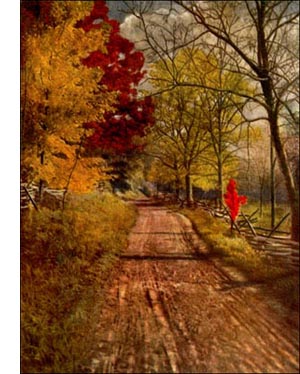Cabbage Palmetto Tree
 The Cabbage Palmetto (Sabal Palmetto, R. & S.) is one of the characteristic features of the southeastern coast. It attains its largest size on the west coast of Florida. Its western limit on the Gulf is the mouth of the Appalachicola River. It extends north to the Cape Fear River in North Carolina.
The Cabbage Palmetto (Sabal Palmetto, R. & S.) is one of the characteristic features of the southeastern coast. It attains its largest size on the west coast of Florida. Its western limit on the Gulf is the mouth of the Appalachicola River. It extends north to the Cape Fear River in North Carolina.A crown of spreading, fan-like leaves surmounts a stout stem which is covered for a considerable distance from the top with the broad concave petioles of the leaves. These are finally split by the enlargement of the growing stem, giving the trunk the appearance of being encased in a kind of regular basketwork. Trees 20 feet high are common along sandy shores. Less frequently North, but often in Florida, one sees these trees 30 to 40 feet tall, with bare, slender stems crowned with round, leafy heads, looking almost like the royal palms. The great clusters of small yellow flowers followed by black berries hang from among the leaves, ripe in autumn but persisting into the following summer.
The cabbage palmetto grows, as do all palms, from a central terminal bud. This bud is the "cabbage" in this genus, a tender, succulent vegetable which is cut out of the middle of the stem, cooked and eaten. It is said to be "the very quintescence of cabbage." It is, of course, the death of the tree to lose this growing point.
The fibrous roots are matted in an intricate fashion under these trees, and long, tough rootlets go out on all sides for twenty feet or more. The wood is soft and spongy, with many hard fibro-vascular bundles running lengthwise of the stem. The outer rind is thick and much lighter than the centre. The trunks are used as piles and manufactured into canes and other small articles. The fibrous bark in cross section is made into cheap scrubbing brushes, and fibres of leaf sheaths make the bristles of more permanent ones. Houses are thatched with the adult leaves. Baskets, hats and mats are made from strips of the white, immature leaves. In Southeastern cities palmettos are used as a street and ornamental tree to a considerable extent. "Palmetto scrub" is the bane of hunters, surveyors and others who are obliged to go on foot through regions covered with the tough young growth of these trees.